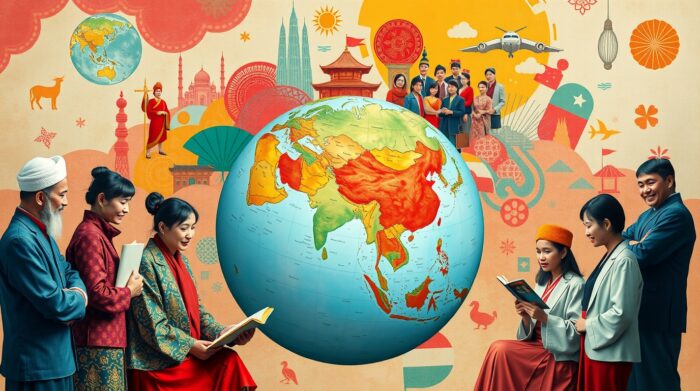The Rise of AI Content Generation in Asia
Asia stands at the forefront of a digital revolution driven by artificial intelligence. From Seoul to Singapore, AI Content Generation is transforming how brands communicate, storytellers create, and communities connect. As economies move rapidly toward digital-first ecosystems, the demand for localized, intelligent content tools continues to surge.
Unlike Western markets where English dominates, Asia’s vast diversity—spanning languages, dialects, and deep cultural nuance—creates both a challenge and an opportunity. Businesses are realizing that technology alone isn’t enough. True communication requires sensitivity, understanding, and context.
The rise of natural language processing (NLP) allows AI Content Generation to interpret tone, emotion, and sentiment like never before. Still, the key lies in blending data with empathy—where algorithms mirror humanity, not mimic it.

The Diversity of Languages and Cultures Across Asia
Asia is home to over 2,300 languages spoken across 49 countries, making it the most linguistically rich region on the planet. From Mandarin to Malay, Urdu to Japanese, every tongue carries its own rhythm and worldview. For developers, this diversity presents an intricate challenge—translation alone won’t cut it.
That’s where AI Content Generation steps in to decode, adapt, and reflect cultural intricacies within content. It’s not just about accuracy—it’s about authenticity.
Cultural nuance affects everything from humor and tone to color symbolism. Red means luck in China but danger in other contexts. A literal translation misses the spirit; AI Content Generation bridges that gap by learning from diverse linguistic data, ensuring that technology communicates, not confuses.

How AI Content Generation Tools Are Evolving
The evolution of AI Content Generation across Asia marks a pivotal shift in digital creativity. These systems no longer just translate words—they interpret meaning, emotion, and cultural tone.
New models trained on regional datasets now produce multilingual content that captures cultural subtleties. Startups across Asia are engineering AI that understands slang, context, and sentiment unique to each region. The results are powerful: marketing campaigns that feel local yet carry global appeal.
As brands rely more on AI Content Generation, they’re finding that technology can amplify human creativity rather than replace it. The future of content in Asia is hybrid—human intuition guided by machine intelligence.

Bridging Language Gaps with AI Translation and Localization
AI translation today goes far beyond direct word swaps. The next generation of AI Content Generation tools incorporates tone, idioms, and context, making messages sound natural rather than mechanical.
In multilingual regions like Southeast Asia, localization is everything. A tagline that resonates in Singapore might fall flat in Vietnam. AI tools trained with cultural awareness ensure that messages feel native, not foreign. This capability is transforming industries from marketing to education, where clarity and connection are key.
By empowering businesses to speak in their audience’s language—literally and emotionally—AI Content Generation is breaking down walls that once limited communication across Asia’s cultural spectrum.

Cultural Sensitivity in AI-Generated Content
Cultural sensitivity isn’t optional—it’s essential. Poorly localized or tone-deaf messaging can alienate entire audiences. Bias in training data has long been a problem, but AI Content Generation is helping to change that by introducing human oversight and diverse data sources.
Human-in-the-loop systems ensure that AI respects social customs, humor, and traditions. It’s not about political correctness—it’s about cultural intelligence. In a region as varied as Asia, success belongs to the brands that understand, respect, and reflect local perspectives through technology.
When handled responsibly, AI Content Generation becomes more than automation—it becomes a bridge of understanding, one that connects societies through shared respect and smarter storytelling.

Real-World Applications and Success Stories
Across Asia, AI Content Generation is already changing the game. From Japanese brands automating customer engagement to Indian companies producing multilingual e-commerce listings, AI is amplifying efficiency and reach.
In education, AI-powered platforms are adapting English courses for local students. In tourism, destination boards are using AI-generated content to create experiences that feel uniquely personal. The technology isn’t replacing creativity—it’s scaling it.
Through AI Content Generation, Asia is reclaiming its digital narrative—producing stories, campaigns, and experiences that sound less robotic and more real.
Challenges and Ethical Considerations
As promising as it is, the path forward isn’t without pitfalls. AI can unintentionally reinforce bias or oversimplify complex cultures. Ethical AI Content Generation must be transparent, fair, and inclusive.
Developers need to ensure that the datasets behind these tools represent Asia’s true diversity. Every dialect, tradition, and identity deserves space in the digital sphere. Ethical frameworks are emerging, but responsibility remains with creators to make sure that technology serves humanity, not the other way around.
Building trust starts with honesty. Every algorithm trained to write should also be trained to respect.
Conclusion: The Future of AI Content Creation in a Culturally Connected Asia
The future of Asia’s digital storytelling lies in balance—between human creativity and technological precision. AI Content Generation is no longer just a tool for efficiency; it’s a medium for connection.
By bridging language and culture, AI enables voices once confined by geography or translation barriers to reach audiences across the world. It helps brands resonate authentically, creators express freely, and societies connect deeply.
The next wave of innovation won’t be about machines replacing people—it’ll be about machines amplifying what makes us human. And in that shared narrative, AI Content Generation will lead Asia into a future where every language is understood, and every story is heard.





